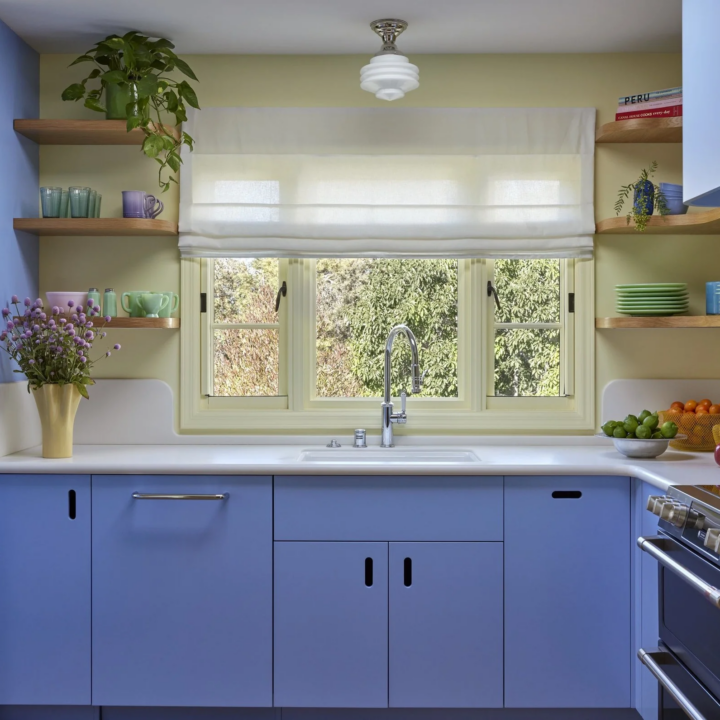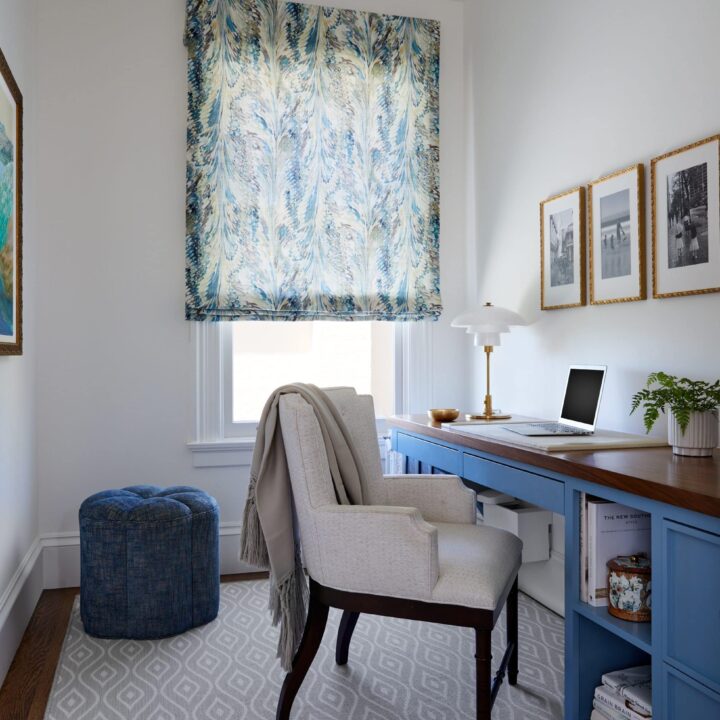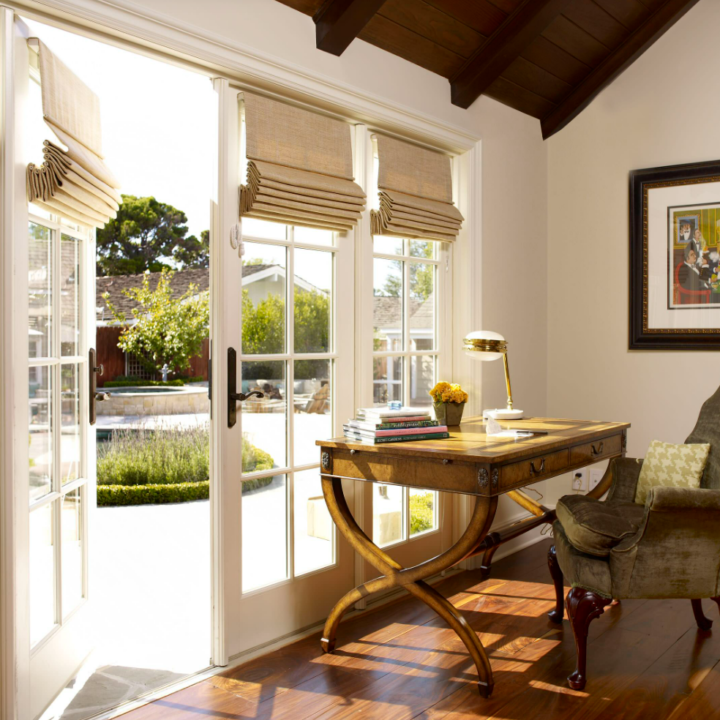Spiffy Speak
Minimalist Home Decor: The Essential Principles
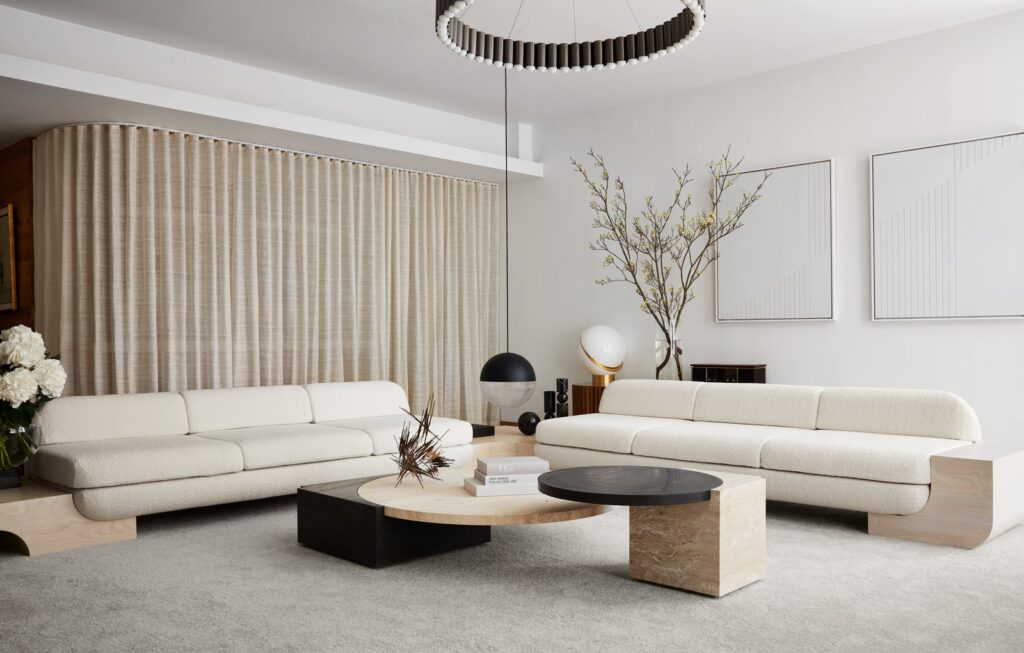
Simplicity, serenity, and sustainability – three ‘S’s to sum up one of the most powerful movements in interior design: minimalism. More than just another decor style, minimalism reflects a lifestyle philosophy that focuses on minimizing material belongings to maximize life experiences and well-being. Therefore, it entails stripping down to the very basics and exalting only the inevitable essentials. Translate that purpose-oriented downsizing into a design language, and you get light-filled spaces, clean lines, and minimal details.
Renowned German architect Ludwig Mies van der Rohe said it right that the philosophy of “Less is More” is at the heart of this modern interior design style. Functionality enjoys precedence over meaningless excesses and practical ease over high-maintenance frills. If minimalism’s forthrightness and easy elegance interests you, learn more about this design style’s essence in this blog.
The Defining Elements of Minimalism
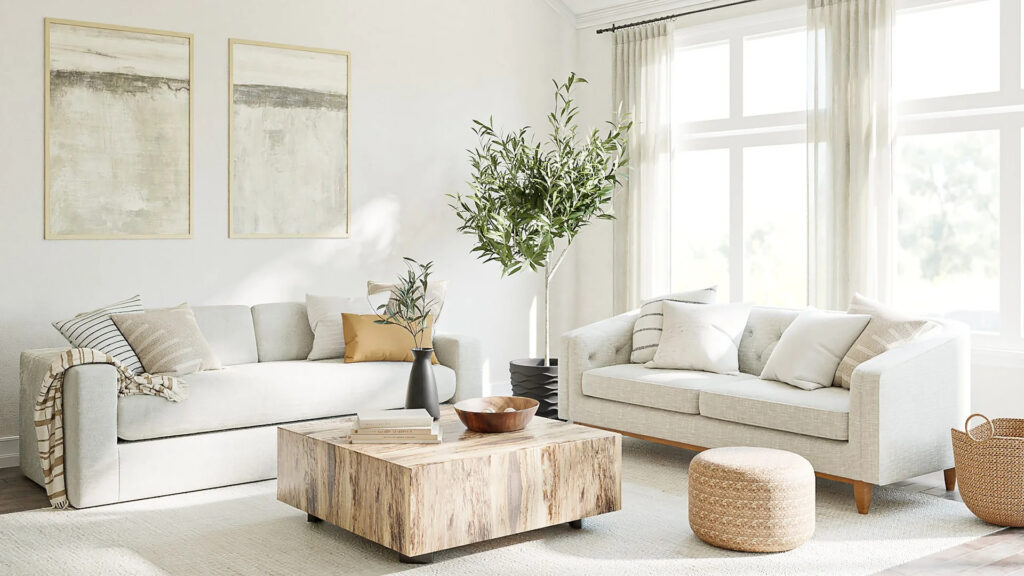
Minimalism believes in keeping to the essentials and editing out superfluous clutter.
The architecture itself exhibits simplicity through unadorned geometric shapes and neutral hues. The facade is not an imposing structure that commands attention but one that blends with the environment and lets the landscape speak for itself.
Anything that does not offer a functional purpose or does not contribute to your sense of well-being fails to justify its inclusion in a minimalist space. Decor for decor’s sake is a rare sight in a minimalist home. The result is a sparsely – but thoughtfully – curated home that is decorated with things that hold meaning and purpose to you.
The minimalist home does not revel in the accumulation of things but in a judicious ensemble of necessary possessions that enables you to focus on your desired lifestyle in terms of hobbies, activities, and interests. The design is elevated not by adding more to top it but by keeping it refined in its most simplified form. And so, every minimalist space has some prime characteristics:
Maximum Functionality, Minimum Hassle
![]()
Neat, organized, unfussy – that’s the first impression of a minimalist space. Functional efficiency and practical ease are the top priorities. This is ensured by a clear layout and simplified decor that makes regular cleaning and maintenance less time-consuming.
The elements of the space are tightly edited and the layout worked with great forethought. Everything within the space has a reason to be and a clearly designated place to be at. It’s a well-organized space that is easy to maintain in its spick and span prettiness.
The aesthetic of the space consists in its simplicity, not in complexity or artful details. Every component, from architecture to furniture, is a bare-boned beauty with unfussy silhouettes and clean lines.
The storage solutions of minimalist decor are a great example of beauty with simplicity and primacy to functionality. Closed ceiling-to-floor storage units that blend into the architecture are very typical of minimalist homes. This is done with a view to ensuring ample storage without calling for attention. Open shelves and display of items over them are avoided and the cabinetry usually features hardware-free flat-panel frontages. This helps to promote a clutter-free appeal and functional ease in multiple ways. Firstly, all the visual clutter gets masked and warrants lesser cleaning schedules. The absence of protruding trims, handles, and knobs makes the cleaning of the exterior easier and the seamless flow makes it optically less engaging.
The purpose is served with ‘less’ instead of more. The maintenance is made less demanding and the design more svelte. Now that’s how every detail in a minimalist home is worked out – function first, foremost, and last.
Abundance of Natural Light
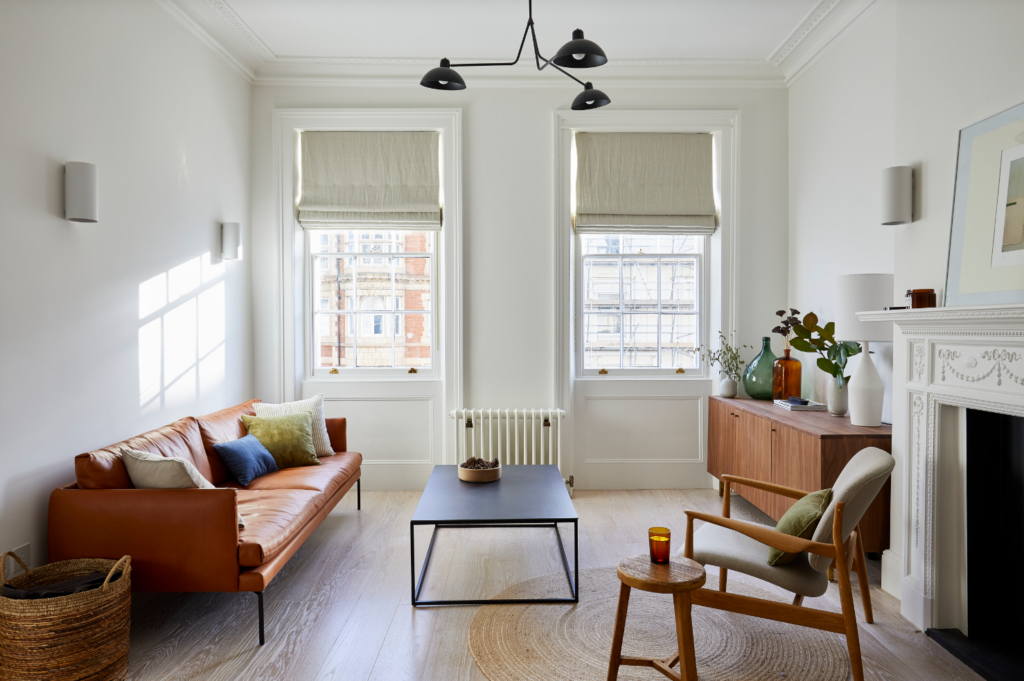
Natural light is an essential ornament of any minimalist space. Much like other contemporary styles like mid-century modern, huge picture windows maximize the view of the external environment. Further, they are dressed minimally with window treatments that sink into the architecture so the views get to be center stage and the light is maximized.
The sun-flushed interiors of a minimalist home are credited to careful layout and restrained decoration as well. Limited use of furniture and careful selection of those with neat and sleek profiles allows for light to navigate with minimum hindrance. It also helps to make small spaces look larger and dark spaces brighter.
Little to no embellishments may be seen on the walls or surfaces, so every element in the room is bouncing light or at least not blocking its flow invasively. This contributes to making the space feel calming, light, and airy.
Neutral or Monochromatic Palette
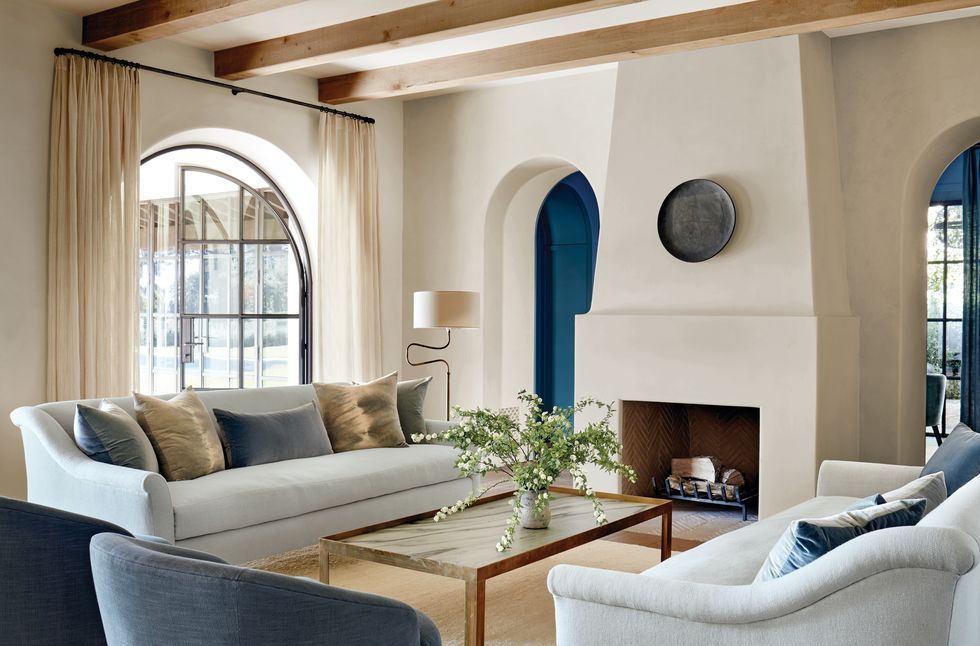
A restrained palette is characteristic of minimalism. Neutral hues dominate the scene and bold colors are often only used as accents. In fact, white is the oft-repeated background theme in most minimalist homes because of its unparalleled innate power to reflect light.
Stark contrasts are appreciated in this design style as they help to carve out those clean lines with more clarity and sophistication. Hence, black and its close shades are often present in accent roles.
This cool color mix of white, black, and greys is often balanced with warm hues like browns and beiges. And it is brought about through the organic touch of wooden textures generously strewn around. They draw from the richness of nature and adhere to the low-key color scheme.
Patterns are shunned totally or kept to a bare minimum at best, and the few that show up are simplistic ones like stripes, made further self-effacing with neutral or monochrome palettes. Solids dominate the space but textural richness is often introduced to make it cozy and inviting.
Generous Negative Space
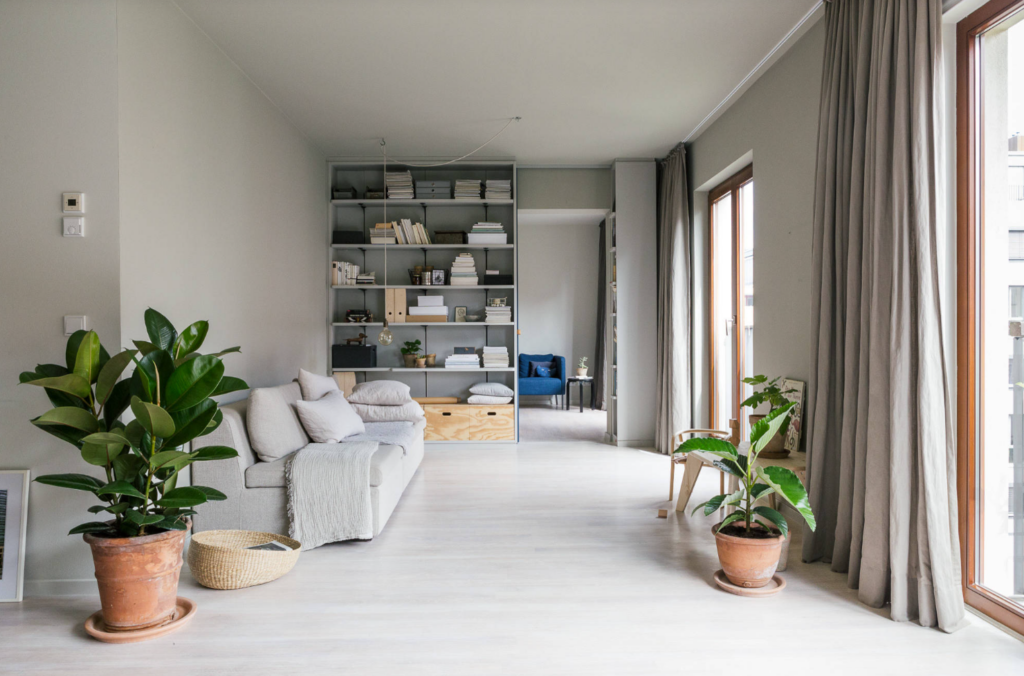
Sparseness, usually seen as a ‘defect’ in many design styles, is the celebrated trait of minimalism. It is intentional and worn on the sleeve with pride. There is no urge to fill every inch with something that woos the eye, instead, the openness and bareness are the allure. More neutral space translates into a calming oasis with less matter to engage the eye and the mind.
Less furniture, seamlessly integrated storage, and plenty of open space are very characteristic of minimalist homes. The sharp angles of the architecture and the richness of the natural landscapes incorporated through oversized windows are the showstoppers while the interior decor is quiet and demure.
Embellishments are kept to the minimum both in volume and in detail. Not gallery walls, but a single statement art installation; not a jungle, but a curated set of plants; not jarring wallpapers, but simple white walls – that’s minimalism’s pared-back elegance.
Surfaces are kept as free and uncluttered as possible. So, the dining table may have nothing more than a sculptural vase with live plants and the living room couch just a pair of pillows.
This tight editing may seem like austere renunciation, but what it factually does is put the spotlight on the few accessories that are there. The negative space around them leaves them without competition for attention so they can shine as they truly deserve.
Minimalism is not busy with abundance and not stimulating with colors; there’s just enough for the purpose to be fulfilled and the mind can now focus on the more important things – thoughts, ideas and events.
Sustainability – the Farsighted Goal
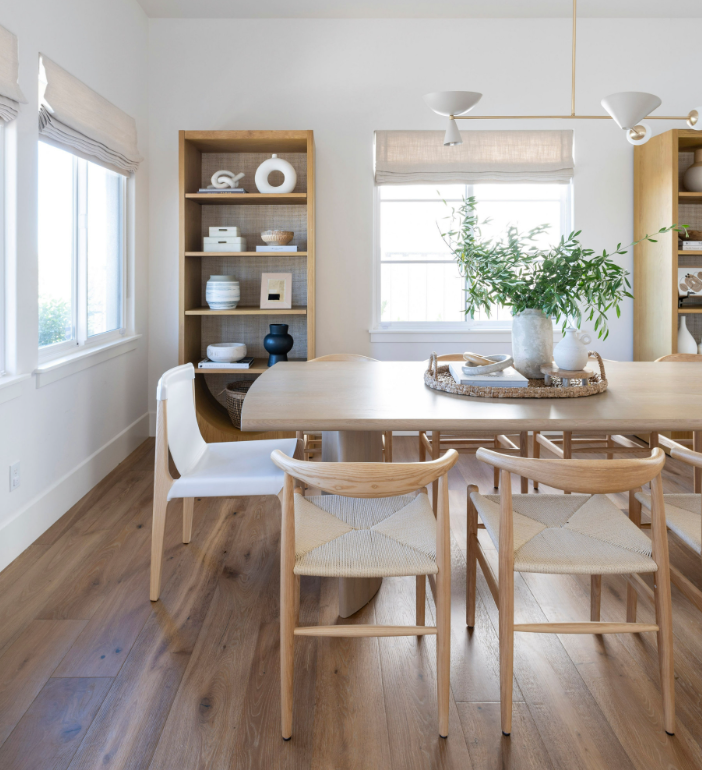
Minimalism makes more with less, but why? Is it because of a lack of appreciation towards the artful or disdain for extravagance? The answer, in fact, is just the opposite and is couched in its historical origin.
Minimalism started as a response to the erratic displays of wealth and complicated detail in interior design up until the dawn of the twentieth century. It was also the post-war strategy to make decor cheaper and readily available to the then economically challenged society through mass production and base model designs. Fast-forward a few decades, and environmental issues gained global attention for their detrimental effects that challenge our very survival.
Minimalism today is an aggregate of all these responses. People are increasingly aware of their social responsibility and the need to minimize their footprint on the planet with eco-friendly homes and living. The more the accumulation of things, the faster will resources be spent to produce them, and the sooner will landfills be thronged. Minimalism seeks to offer a solution for environmental pollution and exploitation of natural resources by reducing consumption.
For the same reason, the quality of materials is given top consideration. The materials used for the construction and decoration of the house are typically sustainably sourced and capable of aging gracefully while withstanding depredation due to the elements of nature. Stone, wood, and metal are used generously for the construction of the house to ensure longevity. For the decor, biodegradable materials are preferred over non-sustainable ones like plastic, vinyl, and polyester.
And, thanks to mass production, modern interior design is fairly democratized as high-quality functional and decor accessories are made more readily available and economically viable.
Minimalism has a far-sighted approach to global socio-economic and environmental issues and is not just about a lifestyle or a decor style but also about futuristic thinking and sustainable solutions.
READ MORE: SIMPLE HACKS FOR CREATING MORE SUSTAINABLE INTERIOR DESIGN SOLUTIONS
Go the Minimalism Way: Make More with Less
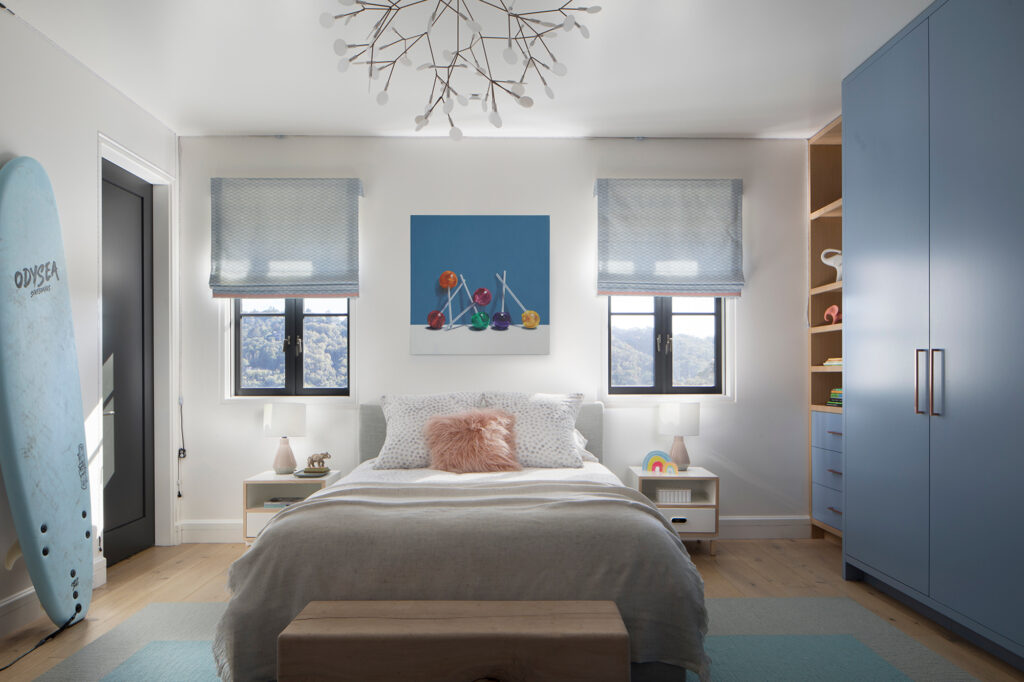
Minimalism exchanges complex shapes for streamlined profiles, opulent embellishments for minimal details, and expendable accumulation for judicious and responsible use of resources. The goal is to embrace simplicity tangibly, promote maximum functional efficiency, and in the long run, ensure maximal sustainability.
With a rich philosophy at its core, minimalism is about ‘making more with less’, and not about living with less. We hope you have acquired the secrets to making your home a cleverly curated, light-filled, functionally efficient, and futuristically sustainable space – the true minimalist way!
READ MORE: DECORATING WITH NEUTRAL CURTAINS: TOP IDEAS & TIPS

